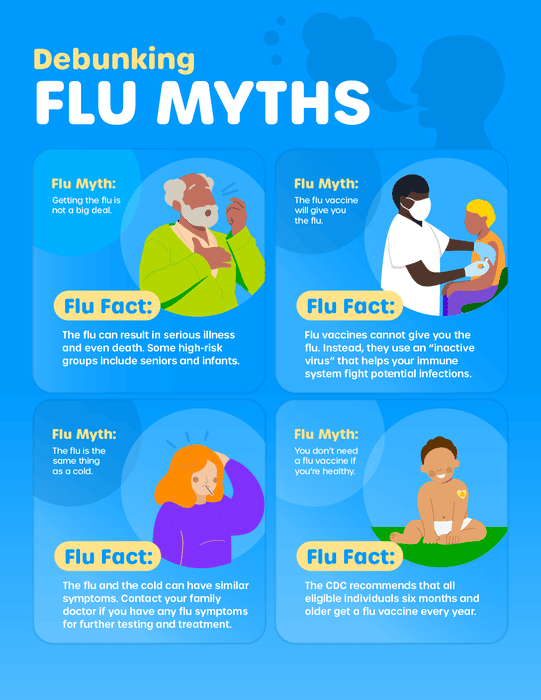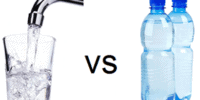Unveiling the Truth: Debunking Cold and Flu Myths

Unveiling the Truth: Debunking Cold and Flu Myths
Evidence-based information to help you navigate the world of cold and flu treatments and make informed decisions about your health.
Key Takeaways
- There are over 160 types of cold viruses, making it difficult to develop a cure for the common cold.
- Certain behavioral protocols and compounds, supported by science, can help in treating colds and flu.
- Antibodies against one serotype of the cold virus may not be effective against another, highlighting the importance of the immune system in fighting off colds and flu.
- The podcast aims to provide science-based information about colds and flu to the general public, with support from sponsors like juv, Helix sleep, and Roa.
Understanding Cold and Flu Viruses
Understanding the complex nature of cold and flu viruses is essential for developing effective prevention and treatment strategies.
Cold viruses, also known as rhinoviruses, are characterized by different strains, with over 160 types identified so far.
On the other hand, flu is caused by the influenza virus.
Both colds and flu are primarily transmitted through respiratory droplets when an infected person coughs or sneezes.
It is important to note that viral transmission can also occur through direct contact with contaminated surfaces.
These viruses often result in nasal symptoms such as a runny nose or sneezing.
Differentiating Between Colds and Flu
Differentiating between colds and flu requires an understanding of the distinct characteristics and symptoms associated with each viral infection. Here are some key points to help you differentiate between the two:
- Differentiating symptoms: While both colds and flu can cause similar symptoms such as cough, congestion, and sore throat, there are some differences to be aware of. Flu tends to come on suddenly and is often accompanied by high fever, body aches, fatigue, and severe headache. Colds, on the other hand, usually involve milder symptoms and rarely cause fever or severe body aches.
- Impact on the body: Flu generally affects the body more severely than a common cold. It can lead to complications such as pneumonia, bronchitis, and sinus infections. Colds, although unpleasant, usually resolve on their own without causing severe complications.
- Duration: Colds typically last for about a week, while flu symptoms can persist for two weeks or longer.
Preventive Measures for Colds and Flu
To minimize the risk of contracting colds and flu, implementing preventive measures is crucial for maintaining good health. While there is no foolproof way to completely avoid these illnesses, there are steps you can take to reduce your chances of getting sick. One effective preventive measure is to receive the flu vaccine annually, as it provides protection against the most common strains of the influenza virus. Additionally, practicing good hygiene, such as washing your hands regularly and avoiding close contact with sick individuals, can help prevent the spread of cold and flu viruses. It is also worth exploring natural remedies that may help boost your immune system, such as consuming a balanced diet rich in fruits and vegetables, staying physically active, and getting adequate sleep. Here’s a table summarizing some preventive measures:
| Preventive Measures | Benefits |
|---|---|
| Flu vaccination | Provides protection against influenza viruses |
| Good hygiene | Reduces the spread of cold and flu viruses |
| Balanced diet | Boosts immune system function |
| Regular exercise | Enhances overall health and immunity |
| Adequate sleep | Supports optimal immune system function |
The Role of Sunlight and Sleep in Immune Health
Sunlight exposure and quality sleep play vital roles in supporting immune health. Here are three key points to consider:
- Role of Vitamin D: Sunlight is a natural source of vitamin D, which plays a crucial role in immune function. Vitamin D helps regulate the immune response, enhances the activity of immune cells, and reduces the risk of infections. Adequate sunlight exposure can help maintain optimal vitamin D levels and support a healthy immune system.
- Impact of Sleep Deprivation: Lack of quality sleep can have a negative impact on immune health. Sleep deprivation weakens the immune system, making individuals more susceptible to infections. It impairs the production of immune cells and reduces the effectiveness of immune responses. Prioritizing regular, sufficient sleep is essential for maintaining a strong immune system.
- Circadian Rhythm Regulation: Sunlight exposure after waking helps regulate the body’s circadian rhythm, which is crucial for immune function. A well-regulated circadian rhythm ensures optimal immune response, helps prevent inflammation, and supports overall health. Incorporating sunlight exposure and establishing a consistent sleep routine can contribute to a robust immune system.
Enhancing Immune System Function
Enhancing immune system function is crucial for maintaining optimal health and preventing infections. While there is no magic pill that can instantly boost our immune system, there are certain lifestyle choices and natural remedies that can support its function.
Regular exercise, a balanced diet rich in fruits and vegetables, and adequate sleep are essential for a strong immune system. Additionally, certain immune system boosters, such as vitamin C, zinc, and probiotics, have been shown to have positive effects on immune function.
Natural remedies like echinacea, elderberry, and garlic may also help strengthen the immune system. However, it’s important to note that these remedies should not replace medical treatment and should be used in conjunction with proper healthcare.
Benefits of Red and Near-Infrared Light Therapy
What are the potential benefits of utilizing red and near-infrared light therapy for enhancing immune system function and overall well-being?
- Improved immune system function: Red and near-infrared light therapy has been shown to stimulate the production of immune cells, such as lymphocytes and macrophages, which play a crucial role in fighting off infections and diseases.
- Reduced inflammation: Red and near-infrared light therapy has anti-inflammatory effects, helping to reduce inflammation in the body. Chronic inflammation can weaken the immune system and make individuals more susceptible to illnesses.
- Faster healing: Red and near-infrared light therapy can enhance the healing process by increasing blood flow to the affected area, promoting tissue repair, and reducing pain and swelling.
These benefits of red and near-infrared light therapy are supported by scientific research and can be effective when used in conjunction with other behavioral protocols aimed at enhancing immune system function.
Incorporating red and near-infrared light therapy into a comprehensive wellness routine may contribute to improved immune system health and overall well-being.
Debunking Common Cold and Flu Treatment Myths
Utilizing red and near-infrared light therapy as a potential treatment for colds and flu requires debunking common myths surrounding their effectiveness and understanding the science-based evidence behind their use.
One of the common misconceptions is that these therapies can cure colds and flu. However, it is important to note that there is currently no known cure for these viral infections.
Red and near-infrared light therapy can be effective treatments for colds and flu by boosting the immune system and reducing symptoms. Studies have shown that these therapies can enhance cellular health and improve the body’s ability to fight off infections.
While they may not completely eliminate the viruses, they can help alleviate symptoms and shorten the duration of illness.
It is important to consult with healthcare professionals to determine the appropriate use of these therapies for colds and flu.
Challenges in Developing a Cure for Colds
Developing a cure for colds poses significant challenges due to the diverse nature of the cold virus and its ability to constantly mutate. The cold virus exists in over 160 types, making it difficult to target with a single vaccine. This high diversity of serotypes creates challenges in vaccine development, as antibodies against one serotype may not work against another.
Furthermore, the cold virus has the ability to mutate rapidly, leading to the emergence of new strains that can be resistant to existing treatments. This viral mutation and resistance further complicate the development of a cure for colds.
Scientists and researchers are continually working to overcome these challenges by studying the genetic makeup of the cold virus and exploring innovative approaches to vaccine development.
The Importance of Antibodies and the Immune System
Antibodies and the immune system play a crucial role in defending the body against colds and flu. When a virus enters the body, the immune system recognizes it as foreign and activates an immune response. This response includes the production of antibodies, which are proteins that specifically target and neutralize the virus.
Antibodies can prevent the virus from entering cells and replicate, thereby limiting the spread of infection. Vaccination is a powerful tool that stimulates the production of antibodies without causing illness. By introducing a harmless form of the virus or its components, vaccines prime the immune system to mount a rapid and effective response upon exposure to the actual virus.
Understanding the immune system’s response to cold and flu viruses is crucial in developing effective treatments and preventive strategies.
Science-Based Information for the Public
Providing accessible and reliable scientific information, the podcast aims to empower the public with evidence-based knowledge about cold and flu prevention and treatment. With the goal of serving the public, the podcast covers a range of topics related to cold and flu, including behavioral interventions and immune-boosting compounds.
Here are three key points to enjoy from the podcast:
- Behavioral interventions: The podcast delves into the science-supported techniques that can help individuals avoid getting colds and flu. It provides practical advice on habits and practices that can reduce the risk of infection.
- Immune-boosting compounds: Understanding how the immune system works is essential for preventing and treating colds and flu. The podcast explores certain compounds that have been shown to enhance immune system function, providing listeners with evidence-based information on how to boost their immune system.
- Sponsored discounts: The podcast is supported by sponsors like juv, Helix sleep, and Roa. Listeners can access exclusive discounts from these sponsors, making it easier for them to implement the science-based recommendations discussed in the podcast.
Through these informative episodes, the podcast aims to bring science-based information about cold and flu to the general public, empowering them to make informed decisions about their health.
Support From Sponsors and Access to Exclusive Discounts
To further support the dissemination of evidence-based information on cold and flu prevention and treatment, the podcast secures sponsorship from industry leaders like juv, Helix sleep, and Roa, offering listeners exclusive discounts to implement the science-backed recommendations discussed in the episodes. These sponsors provide valuable benefits that contribute to the overall mission of the podcast.
By partnering with juv, listeners have the opportunity to access red light therapy devices that can enhance cellular and organ health. Helix sleep offers tailored mattresses that improve overall health through quality sleep. Roa provides eyeglasses and sunglasses that offer crystal clarity for the visual system.
To showcase the benefits of these sponsors and provide an easy-to-understand overview of their offerings, the following table presents a summary:
| Sponsor | Benefits |
|---|---|
| juv | Enhances cellular and organ health through red light therapy |
| Helix sleep | Improves overall health with tailored mattresses |
| Roa | Provides crystal clarity for the visual system |
Frequently Asked Questions
How Many Types of Cold Viruses Are There?
There are numerous strains of cold viruses, with over 160 types identified. These viruses are transmitted through various methods, such as respiratory droplets or direct contact with infected individuals.
Can Sunlight Exposure After Waking Really Improve Sleep?
Sunlight exposure after waking has been shown to improve sleep quality. This is due to its effects on setting the circadian rhythm, which regulates our sleep-wake cycle. Incorporating this practice may provide benefits for individuals seeking to enhance their sleep.
What Are Some Behavioral Tools That Can Strengthen the Immune System?
Strengthening the immune system can be achieved through various behavioral tools, such as stress management techniques and regular exercise. These practices have been shown to enhance immune function and improve overall health.
How Do Red Light and Near-Infrared Light Affect Cellular Health?
Red light therapy and near-infrared light have been shown to have positive effects on cellular health. They can enhance cellular function, promote tissue repair, reduce inflammation, and improve overall well-being.
What Exclusive Discounts Can Listeners Access From the Sponsors?
Listeners of the podcast can access exclusive discounts from sponsors such as juv, Helix sleep, and Roa. These discounts provide an opportunity for individuals to incorporate healthy lifestyle choices and natural remedies into their lives at a more affordable cost.








